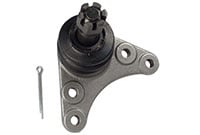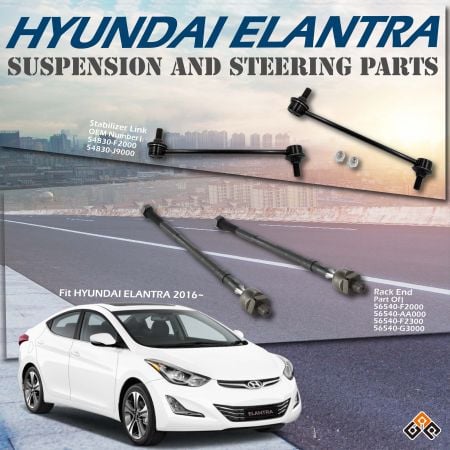What Do VIN Numbers and OEM Numbers Reveal About Car Parts?
What Are VIN and OEM Numbers
When it comes to maintaining a car or manufacturing parts, one of the biggest challenges is ensuring that the right parts fit perfectly. Without the correct information, mistakes happen—wrong parts are ordered, and repairs don’t last. For car repair shops and manufacturers alike, these mistakes are not just inconvenient; they cost time and money. Mismatched parts can lead to repeat work, customer dissatisfaction, and even safety concerns.
That’s where the VIN and OEM numbers come into play. The Vehicle Identification Number (VIN) is a unique 17-character code assigned to every car when it’s manufactured. It serves as the car’s “fingerprint” and contains all the key details about the vehicle’s make, model, and manufacturing year. On the other hand, OEM (Original Equipment Manufacturer) numbers help ensure the parts you order are exact replicas of the originals.
Understanding VIN Numbers on car
What Is a VIN Number on a Car
A VIN number is more than just a random combination of letters and numbers. It is the identity of the car, containing essential information like where it was built, the manufacturer, and details about the vehicle's specifications. Every vehicle has a unique VIN, making it essential for identifying specific parts.
Where Is the VIN Number on a Car
Driver’s Side Dashboard: Look at the corner where the dashboard meets the windshield.
Driver’s Side Door Jamb: Open the door and check where it latches to the car.
Vehicle Documents: Your car’s registration, insurance documents, and bill of sale will also have the VIN listed.
How to Find the VIN Number on a Car
Finding the VIN number is simple if you know where to look. The most common location is on the driver’s side dashboard, but it can also be found in the door jamb, under the hood, or on the engine block. For those looking to check their vehicle’s history or order parts, locating this number is the first step.
How to Read a VIN Number on a Car
Decoding a VIN number is like reading a detailed history of your vehicle. Here’s how you can break it down.
| VIN Section | Characters | What It Represents |
| World Manufacturer Identifier (WMI) | 1-3 | Manufacturer and country of origin |
| Vehicle Descriptor Section (VDS) | 4-9 | Model, body style, engine type |
| Check Digit | 9 | Security feature to prevent fraud |
| Vehicle Identifier Section (VIS) | 10-17 | Model year, assembly plant, and serial number |
The Role of VIN Numbers on Car History Reports
VIN numbers play a critical role in car history reports, which provide a comprehensive overview of a vehicle’s past. Here’s how:
- Tracking Vehicle History: The VIN ensures accurate tracking of a car's history, including previous ownership, accidents, and repairs. This is vital for both buyers and sellers.
- Recall and Warranty Information: The VIN is used to track recalls and warranty claims, which can reveal if the car has any unresolved issues.
- Preventing Fraud: Car history reports use the VIN to cross-check information and prevent fraud, ensuring that the vehicle’s records are authentic.
What Your VIN Number Tells You
A VIN number is more than just a code—it tells a story. Here’s what you can learn from a VIN:
- Manufacturer and Country of Origin: The first three characters identify the vehicle’s manufacturer and where it was built.
- Vehicle Attributes: The next five characters reveal details like the model, engine type, and body style.
- Year and Assembly Plant: The tenth and eleventh characters indicate the vehicle’s model year and the assembly plant where it was built.
- Unique Serial Number: The last six characters provide a unique identifier, differentiating the vehicle from others made in the same factory.
Understanding OEM Numbers
What Is an OEM Number
OEM (Original Equipment Manufacturer) numbers are unique identifiers assigned by manufacturers to specific parts. These numbers ensure that the parts are genuine and fit perfectly with the intended equipment. OEM numbers are crucial for maintaining the integrity and performance of a vehicle.
The Story Behind OEM Numbers
OEM numbers ( internal link : https://www.greatap.com.tw/en/faq/GAP-faq-05.html) are not random—they tell a detailed story about the part’s origin and specifications. Each number is carefully assigned to a part to ensure it matches the vehicle’s exact requirements. This ensures that when you order a replacement part, you get the same quality and fit as the original.
OEM Numbers and Vehicle Authenticity
Using OEM parts is essential for maintaining a car's original condition and value. Here’s why:
- Exact Fit and Specifications: OEM parts are made by the same manufacturer that produced the original parts for the vehicle, ensuring a perfect fit.
- Consistency in Performance: OEM parts maintain the vehicle’s reliability and efficiency, ensuring it performs as the manufacturer intended.
Differences Between OEM Numbers and VIN Numbers
Purpose and Function
While both OEM and VIN numbers are essential in the automotive industry, they serve different purposes. The VIN number on a car identifies the vehicle itself, providing a unique code that details the car's make, model, and manufacturing details. On the other hand, OEM numbers are specific to individual parts, ensuring that replacement parts match the original components in terms of fit, function, and quality.
Scope of Information
The VIN number provides a broad range of information about the entire vehicle, including its history, specifications, and factory details. In contrast, an OEM number focuses on a single part, offering precise details that ensure the part is the exact match for the vehicle's original equipment.
Usage in the Automotive Industry
VIN numbers are primarily used for vehicle identification, history reports, and tracking recalls. OEM numbers are used by manufacturers, mechanics, and parts suppliers to ensure that the right parts are used in repairs, maintaining the vehicle's integrity and performance.
| Aspect | VIN Number | OEM Number |
| Purpose | Identifies the entire vehicle | Identifies specific parts of the vehicle |
| Scope of Information | Broad: Covers make, model, year, and factory details | Narrow: Focuses on individual parts, ensuring exact match |
| Usage | Used for vehicle identification, history reports, and recalls | Used for vehicle identification, history reports, and recalls Used by manufacturers and mechanics for parts replacement |
How VIN and OEM Numbers Work Together
Matching Parts to Your Vehicle
VIN and OEM numbers complement each other perfectly. The VIN provides detailed information about your vehicle, while the OEM number ensures that the part you order is a perfect match. Together, they help you avoid mistakes in part selection, ensuring the right fit every time.
Ensuring Vehicle Integrity
By using both VIN and OEM numbers, you can ensure that your vehicle remains in its original condition. This is crucial for maintaining the car’s value and performance.
Applications
How to Use Your VIN and OEM Numbers to Find the Right Car Parts
Finding the right car parts doesn’t have to be complicated. Here’s a step-by-step guide:
- Locate Your VIN: Find your vehicle’s VIN number on the dashboard, door jamb, or vehicle documents.
- Use Online Tools: Enter your VIN into online lookup tools to get detailed information about your vehicle.
- Search for OEM Numbers: Use the information from your VIN to find the corresponding OEM numbers, ensuring you get the exact parts you need.
How to Decode VIN and OEM Numbers
Decoding VIN and OEM numbers can be straightforward with the right approach:
- VIN Decoding: Use the structure of the VIN to decode the vehicle’s history, specifications, and origin. You can use the NHTSA VIN Decoder for this purpose.
- OEM Number Decoding: Refer to manufacturer guides or online databases to decode OEM numbers and ensure compatibility with your vehicle.
Cross-Referencing VIN and OEM Numbers for Accuracy
To avoid common mistakes, always cross-reference your VIN and OEM numbers when ordering parts. This ensures that you receive parts that are not only compatible but also maintain the integrity of your vehicle.
How to Use VIN and OEM Numbers to Avoid Common Car Maintenance Mistakes?
Using VIN and OEM numbers can help you avoid costly maintenance mistakes. For example:
1. Prevent Incorrect Repairs: Ensure that the parts you order are a perfect match for your vehicle, reducing the risk of improper repairs.
2. Stay Informed on Recalls: Use your VIN to check for recalls and warranty issues, addressing potential problems before they escalate.
Insights
Why VIN and OEM Numbers Are Crucial for Automotive Businesses
For automotive businesses, VIN and OEM numbers are indispensable tools. They:
- Enhance Accuracy: Ensure that the correct parts are used, reducing errors and improving customer satisfaction.
- Improve Efficiency: Streamline the parts ordering process, saving time and reducing costs.|
The Importance of VIN Numbers for Car Parts Sellers
For car parts sellers, VIN numbers are crucial for:
Accurate Part Identification: Reduce the risk of errors by matching parts to the exact specifications of the vehicle.
Improving Customer Trust: Provide accurate information and reliable parts, enhancing customer trust and loyalty.
How VIN and OEM Numbers Improve Automotive Parts Manufacturing for B2B Clients
VIN and OEM numbers play a significant role in manufacturing:
Precision Manufacturing: Ensure that parts are made to exact specifications, improving quality and reliability.
Streamlined Operations: Optimize inventory management and reduce waste by using these numbers to predict demand accurately.
Impact on Aftermarket Parts
Ensuring Compatibility and Performance
Aftermarket parts suppliers rely on VIN and OEM numbers to ensure their products are compatible with various vehicles. This ensures that the parts perform as expected, maintaining the vehicle’s reliability.
Quality Assurance
By using OEM numbers, aftermarket suppliers can reverse-engineer parts to meet or exceed original specifications, providing high-quality alternatives to OEM parts.
Building Better Business Relationships Through VIN and OEM Number Accuracy
For Great Auto Parts, accuracy in using VIN and OEM numbers is a key to building trust with your clients. By ensuring that every part fits perfectly, you can enhance customer satisfaction and foster long-term relationships.
Why VIN and OEM Numbers Are Essential for Automotive Parts Distributors
Distributors benefit greatly from partnering with a manufacturer that prioritizes these numbers. Accurate parts mean fewer returns, happier customers, and a stronger reputation.
How Our Use of VIN and OEM Numbers Can Streamline Your Business Operations
At Great Auto Parts, we use VIN and OEM numbers to ensure that every part we produce meets the highest standards of quality and compatibility. This not only streamlines your business operations but also gives you a competitive edge.
The Business Advantages of Partnering with a Manufacturer Who Uses VIN and OEM Numbers
Partnering with Great Auto Parts means you’re working with a company that understands the importance of precision. Our expertise in using VIN and OEM numbers ensures that your business runs smoothly and efficiently.
Why Choose Great Auto Parts?
At Great Auto Parts, we take pride in our ability to deliver high-quality, reliable car parts. Our deep understanding of VIN and OEM numbers ensures that every part we produce is a perfect fit for your needs. Whether you’re looking to maintain a fleet or provide your customers with the best aftermarket parts, you can trust us to deliver.




